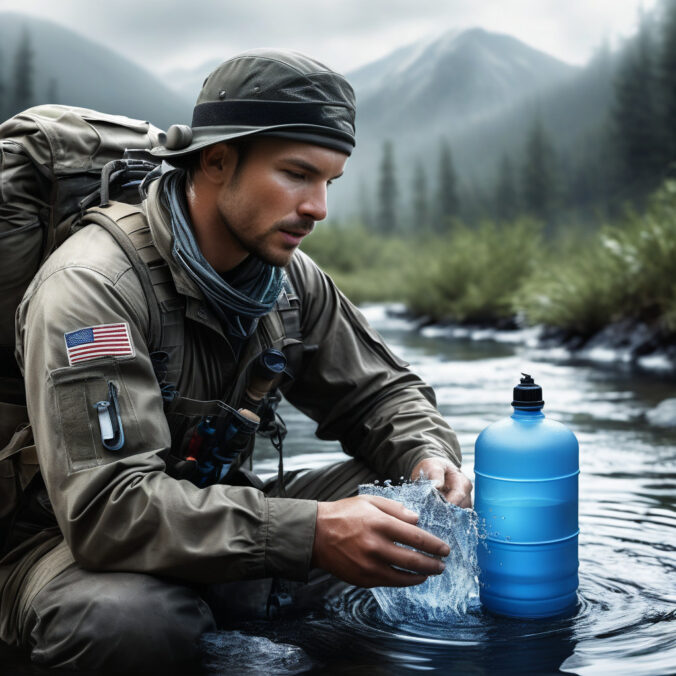A specific type of first aid known as “wilderness first aid” focuses on giving medical attention in isolated and wilderness locations where it may be difficult or impossible to get expert medical assistance. Survival first aid is closely related, and the two may become synonymous inn some situations. Being ready to manage catastrophes and mishaps in the outdoors can be the difference between life and death, which is why it is so crucial. Those who complete wilderness first aid training are prepared to diagnose and treat illnesses and injuries in isolated locations where medical assistance may not be easily accessible.
Understanding the Importance of Wilderness First Aid
In contrast to standard first aid, wilderness first aid considers the particular difficulties and dangers of being in a remote location. Help may be hours or even days away in the wilderness, communication may be difficult or nonexistent, and access to medical services may be restricted. As a result, it is essential to possess the abilities and know-how necessary to stabilize a patient and offer emergency treatment until expert assistance can be obtained.
Anyone going into the woods needs to be ready for crises in isolated locations. Mishaps can occur at any time, be it a hiker’s fall, a campfire burn, or an allergic response to a bug bite. Possessing the tools and knowledge required to manage these circumstances can make all the difference in guaranteeing a successful result. Those who have received wilderness first aid training are more likely to survive and sustain less additional harm because they have the self-assurance and skills necessary to react appropriately in emergency situations.
Preparing for a Wilderness First Aid Emergency
Having a well equipped wilderness first aid pack is essential while getting ready to spend time in the wilderness. Adhesive bandages, gauze pads, adhesive tape, antiseptic wipes, tweezers, scissors, pain medicines, insect repellant, sunscreen, and a CPR mask are a few necessities for a wilderness first aid pack. It’s also critical to grasp every use for every piece of equipment in the package.
It is essential to plan and prepare for a trip into the outdoors, in addition to carrying a fully stocked first aid bag. This entails doing your homework on the place you’ll be going, being aware of any possible risks or hazards, and being able to communicate and travel in isolated locations. In order for someone to notify the authorities in the event that you do not return as scheduled, it is also crucial to let them know about your itinerary and anticipated return time.
Assessing Injuries in the Wilderness
Examining the patient’s condition in detail is crucial for evaluating injuries sustained in the wild. This entails determining whether the patient is responsive, monitoring respiration and circulation, and analyzing any obvious wounds. To protect the patient and the rescuer, it’s also critical to recognize any potential threats and hazards in the immediate area, such as hazardous fauna or uneven terrain.
To stop more harm or injury, it is essential to recognize possible dangers and hazards. Consider the scenario where a patient has fallen and hurt their leg. It’s critical to determine if there are any other threats that could endanger the rescue effort, such as a nearby cliff or unstable ground. Early risk identification allows for the implementation of suitable safety measures to guarantee the wellbeing of all parties concerned.
Treating Common Wilderness Injuries
Burns, sprains, and bug bites are among the frequent injuries that might happen in the environment. The patient’s outcome might be greatly affected by the treatment chosen for these injuries.
To reduce tissue damage from burns, it’s critical to chill the area with cold water for at least ten minutes. Cover the burn with a clean cloth or sterile dressing once it has cooled. When treating sprains, it’s critical to immobilize the affected joint with a splint or homemade supplies like clothes or sticks. Pain and swelling can also be lessened by applying ice and elevating the affected limb. When dealing with insect bites, it’s critical to wash the affected area with soap and water, utilize a cold compress to minimize swelling, and treat itchy areas with hydrocortisone cream or antihistamines.
Managing Medical Emergencies in Remote Areas

It’s critical to understand how to manage life-threatening medical situations, such heart attacks and strokes, in isolated locations. Time is of the essence in these circumstances, and quick intervention may save lives.
It’s critical to detect the warning signs and symptoms of a heart attack, which include nausea, shortness of breath, and chest pain. Seeking emergency medical attention right away is crucial if someone is having a heart attack in the woods. It could be required to provide CPR or, if one is accessible, utilize an automatic external defibrillator (AED) while you wait for aid to arrive.
It’s likewise critical to identify the warning signs and symptoms of a stroke, which include abrupt weakness or numbness on one side of the body, trouble speaking or understanding speech, and excruciating headaches. In the event of a stroke in the wilderness, it’s critical to contact emergency medical assistance right away. It’s critical to keep the person relaxed and tranquil as they wait for assistance to arrive.
Administering Medications in the Wilderness
Medication administration in an isolated location necessitates careful thought, knowledge of dosage, and awareness of possible adverse effects. Comprehending all of the medications in your first aid box and knowing how to use them correctly is crucial.
Medications in the wilderness must be given according to the directions on the container and, if needed, seek medical advice from a qualified practitioner. It’s also crucial to be aware of any potential allergies or contraindications that can interfere with the way some medications are administered. It’s important to remember when pills expire and to periodically check your first aid kit to make sure all of the prescriptions are current and in good working order.
Handling Wounds and Bleeding in the Wilderness
It’s imperative to understand how to manage wounds and stop bleeding in the outdoors in order to avoid infection and more harm. In the outdoors, wounds can come in many forms, including abrasions, puncture wounds, and cuts, and each needs to be treated differently.
In order to stop bleeding from cuts, it’s vital to clean the wound with saline solution or clean water and cover it with a sterile dressing or clean cloth. In order to prevent infection from puncture wounds, it’s important to clean the wound well and apply an antibiotic ointment. Abrasions must be cleansed the with soap and water and covered with a sterile dressing or clean cloth for protection.
Dealing with Fractures and Dislocations in the Wilderness
Falls and other mishaps can cause fractures and dislocations in the woods. It’s important to understand how to stabilize and immobilize severe injuries in a distant location until trained medical assistance can be summoned.
In the event of a fracture, care must be taken to immobilize the affected limb using a splint or makeshift supplies like clothing or sticks. In order to lessen discomfort and swelling, it’s also essential to elevate the damaged limb and, if accessible, apply ice. Relocating the joint on your own can exacerbate the dislocation, so it’s best to avoid doing so when handling it. Rather, use a splint or homemade materials to immobilize the wounded leg, and get medical attention from a professional as soon as you can.
Evacuation Procedures in the Wilderness
In certain situations, getting a patient out of the wilderness and into competent medical treatment may require evacuation. Various evacuation techniques can be applied based on the circumstances and available resources.
If the patient is able to walk or get assistance to a nearby trailhead or road, self-evacuation may be an option. In other situations, the patient could be moved to a more accessible area using a litter or makeshift stretcher. Helicopter evacuation might be required in more serious situations, particularly in isolated locations where road access is impossible. It’s vital to have an emergency evacuation plan in place and to get in touch with rescue or law enforcement as soon as possible.
Wilderness First Aid Training and Certification
Training in wilderness first aid is required for anyone spending any amount of time in isolated locations. A number of wilderness first aid training programs are available to equip people with the skills and information needed to react appropriately in an emergency.
Topics including patient assessment, wound treatment, fracture management, and evacuation protocols are covered in such education courses. In addition, they offer scenarios and practical training to mimic actual outdoor crises. After completing the course, students can earn a certification in wilderness first aid, proving that they are capable and prepared to handle crises in isolated locations.
Anyone going into the wilderness needs to know how to provide first aid in the wilderness. Being aware of the particular difficulties and dangers that come with living in a distant place is important, as is being ready for any eventuality. A well-stocked first aid bag, careful planning and preparation for wilderness journeys, and the acquisition of appropriate training and certification can all help people improve their chances of reacting quickly to emergencies and guaranteeing the safety of others as well as themselves.















Recent Comments